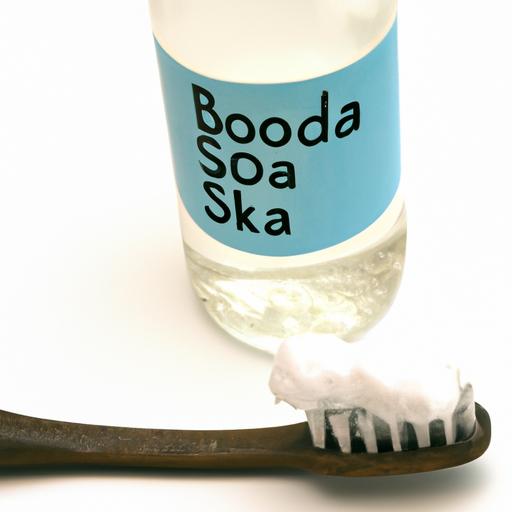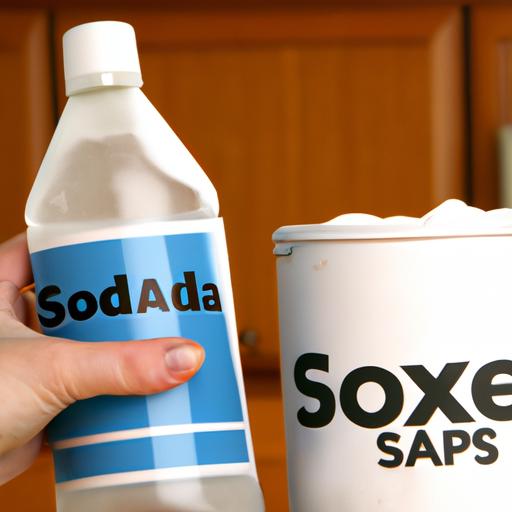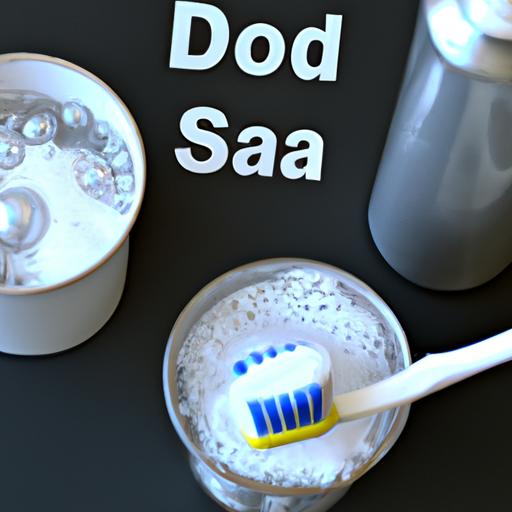Brushing teeth is an essential part of our daily routine, but are we doing it right? Maintaining good oral hygiene is crucial for overall health and well-being. However, sometimes our regular toothpaste may not be enough to keep our teeth clean and healthy. That’s where baking soda and peroxide come in as a game-changer. In this article, we will explore the benefits of brushing teeth with baking soda and peroxide.
Taking care of our teeth is vital as unhealthy teeth can lead to various health issues. Poor dental hygiene can cause tooth decay, gum disease, and even heart disease. That’s why it’s essential to maintain good oral hygiene. While brushing twice a day is the norm, brushing with baking soda and peroxide can take it to the next level. These two ingredients have been used for decades to improve dental hygiene, and the results are impressive. So, let’s dive into how baking soda and peroxide can benefit our dental health.
What is Baking Soda and Peroxide?

Definition of Baking Soda and Peroxide
Baking soda, also known as sodium bicarbonate, is a white crystalline powder with alkaline properties. It has been used as a natural cleaning agent and deodorizer for decades. On the other hand, hydrogen peroxide is a chemical compound with strong oxidizing properties. It is commonly used as a disinfectant, bleaching agent, and antiseptic.
How Baking Soda and Peroxide Work Together to Improve Dental Hygiene
Baking soda and peroxide work together to improve dental hygiene by removing stains, whitening teeth, and killing bacteria. Baking soda is a mild abrasive that helps to remove surface stains and plaque from teeth. It also neutralizes the acids produced by bacteria in the mouth, which can cause tooth decay. Peroxide, when used in the correct concentration, can kill harmful bacteria and prevent infections. When combined, baking soda and peroxide create a powerful cleaning agent that can improve oral health.
Benefits of Brushing Teeth with Baking Soda

Baking soda, also known as sodium bicarbonate, is a natural and gentle abrasive that can help remove surface stains from teeth and neutralize harmful acids in the mouth. Here are some benefits of brushing teeth with baking soda:
Explanation of how baking soda works to clean teeth
Baking soda’s abrasive properties help remove plaque buildup and surface stains from teeth. It has a low relative dentin abrasion (RDA) value, which means it is gentle on teeth and does not cause any damage. The alkaline nature of baking soda helps neutralize the harmful acids in the mouth, which can otherwise erode the enamel and cause tooth decay.
Discussion of its effectiveness in removing stains and plaque
Baking soda’s abrasive properties make it effective in removing surface stains from teeth. It can also help reduce plaque buildup, which is a sticky film of bacteria that can lead to tooth decay and gum disease. Brushing with baking soda can help keep teeth clean and healthy.
How it can improve oral health
Brushing with baking soda can improve oral health in several ways. It helps neutralize harmful acids in the mouth, which can prevent tooth decay. Baking soda’s antibacterial properties can also help reduce the number of bacteria in the mouth, which can prevent gum disease and bad breath. Additionally, it can help freshen breath by neutralizing odors caused by foods and beverages. Overall, using baking soda to brush teeth can lead to better oral health and a brighter smile.
Benefits of Brushing Teeth with Peroxide
When it comes to improving dental hygiene, peroxide is an excellent addition to your oral care routine. Peroxide is an antiseptic that can kill bacteria and prevent infection in the mouth. It’s an active ingredient in many tooth whitening products, which is why it’s a popular choice among people who want to brighten their smiles. Here are some benefits of brushing teeth with peroxide:
Explanation of How Peroxide Works to Clean Teeth
Peroxide is a bleaching agent that can remove stains from your teeth. It works by breaking down the chemical bonds that hold the stain molecules together, making them easier to remove. Peroxide can also help to remove plaque and tartar buildup, which can lead to tooth decay and gum disease.
Discussion of Its Effectiveness in Killing Bacteria and Preventing Infection
Peroxide is an antiseptic that can kill bacteria in the mouth. Bacteria can cause bad breath, gum disease, and tooth decay. Peroxide can prevent the growth of bacteria, reducing the risk of oral infections.
How It Can Improve Oral Health
By killing bacteria and removing stains, peroxide can help to improve overall oral health. It can also reduce the risk of gum disease, tooth decay, and bad breath. Peroxide is an effective and affordable way to maintain good oral hygiene.
In conclusion, brushing teeth with peroxide is an excellent way to improve dental hygiene. It’s effective in removing stains, killing bacteria, and preventing infection. With regular use, peroxide can help to keep your teeth and gums healthy.
Combining Baking Soda and Peroxide for Maximum Benefits
How Baking Soda and Peroxide Work Together
Baking soda and peroxide work together to form a powerful cleaning agent that can improve your dental hygiene. Baking soda is an abrasive substance that helps to remove plaque and stains from your teeth. Peroxide is an antiseptic that kills bacteria and helps to prevent infection. When mixed together, these two ingredients create a powerful cleaning agent that can effectively improve your dental hygiene.
Discussion of Their Combined Effectiveness in Improving Dental Hygiene
Brushing with baking soda and peroxide can improve your dental hygiene in several ways. The abrasive nature of baking soda helps to remove plaque and stains from your teeth, while the antiseptic properties of peroxide kill bacteria and prevent infection. When used together, these two ingredients can effectively remove harmful bacteria and reduce the risk of tooth decay and gum disease. Additionally, brushing with baking soda and peroxide can help to whiten your teeth and remove stubborn stains.
How to Use Baking Soda and Peroxide to Brush Teeth
To use baking soda and peroxide to brush your teeth, you’ll need to create a mixture of the two ingredients. Start by mixing a small amount of baking soda and peroxide in a bowl until it forms a paste. Then, using a toothbrush, apply the mixture to your teeth and brush as you normally would. Be sure to brush for at least two minutes and rinse your mouth thoroughly with water when you’re finished. You can use this mixture once or twice a week in addition to your regular toothpaste to improve your dental hygiene.
Conclusion
In conclusion, brushing teeth with baking soda and peroxide can bring a lot of benefits to our dental hygiene routine. Baking soda can remove stains, fight plaque, and improve oral health, while peroxide can kill bacteria and prevent infection. When combined, the two ingredients can provide maximum benefits for our teeth.
Incorporating baking soda and peroxide into our dental routine is easy and inexpensive. Simply mix a small amount of baking soda and peroxide to form a paste and brush your teeth with it twice a week. However, it’s crucial not to overdo it. Overusing baking soda and peroxide can damage tooth enamel and cause sensitivity.
Maintaining good oral hygiene is essential for overall health and well-being. Brushing teeth with baking soda and peroxide is an effective way to improve dental health, prevent tooth decay, and reduce the risk of gum disease. So, why not give it a try? Your teeth will thank you.



